The influence of family status and ethnicity on of the population (on the example of the Republic of Bashkortostan)
The current issues surrounding migration and population mobility are subject to active study and analysis within both domestic and international literature. Concurrently, greater attention is accorded to the socio-economic and demographic aspects, factors and causes of migration processes and social and labour relations. Consequently, as with any social phenomenon, the labour and migration mobility of the population is influenced by a number of additional factors, including those that are not economic in nature. In this article, the authors examine the influence of two factors: family status and belonging to a particular ethnic group. The objective of this article is to ascertain the impact of ethnicity and family status on the labour mobility and migration behaviour of the population of the Republic of Bashkortostan. The empirical basis of this article is formed by the results of two sociological surveys: “Quality of Employment and Human Development” (2020) and “Ethnic Features of Employment and Labor Mobility of the Population of the Republics of the Russian Federation” (2024). The study focuses on individuals belonging to the three largest ethnic groups in the Republic of Bashkortostan, aged between 18 and 64 years, and residing in the region on a permanent basis. The three largest ethnic groups in the Republic of Bashkortostan are the Bashkirs, Russians, and Tatars. The findings of our study indicate that family and marital status exert a considerable influence on the labour trajectory and migration mobility of the population. While belonging to a particular ethnic group is significant, its impact is less pronounced in the context of the Republic of Bashkortostan, where it is more closely associated with the distinctive characteristics of rural or urban settlement of ethnic groups. The authors of the article concede that the influence of ethnicity on labour and migration mobility of the population may be less pronounced or, conversely, more pronounced in other Russian regions, republics or countries.
Figures
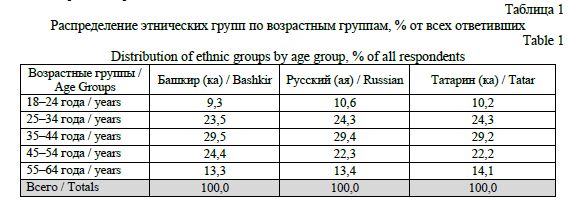
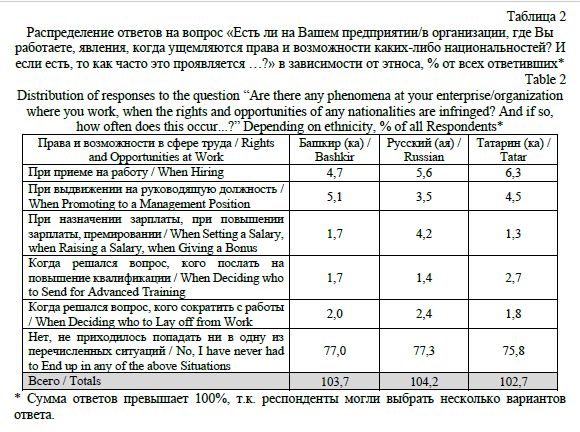
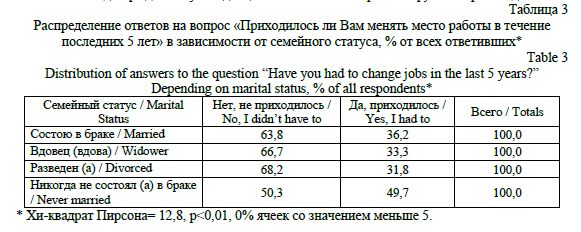
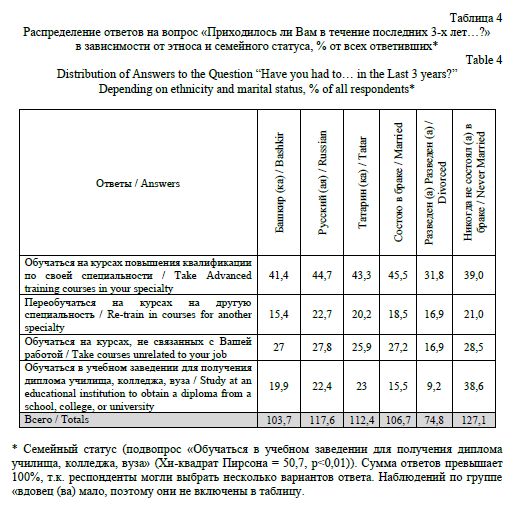
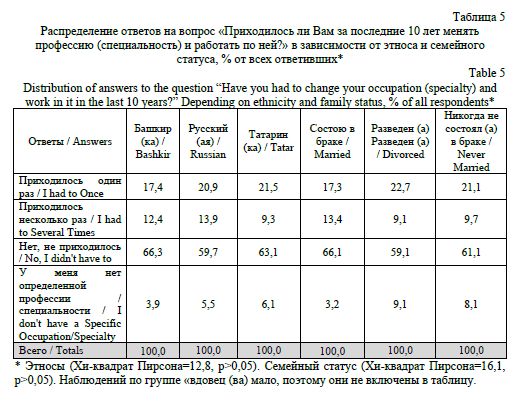
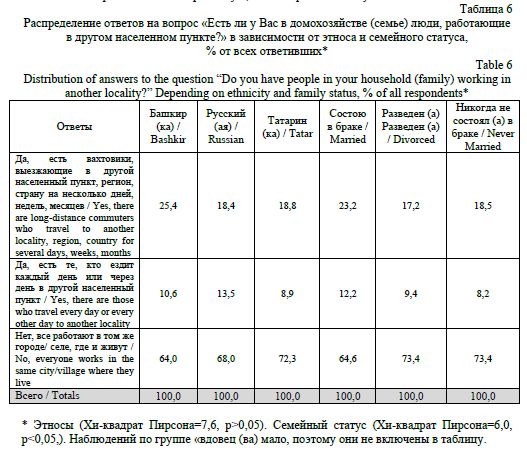
Valiakhmetov, R. M., Turakayev, M. S. (2024), “The influence of family status and ethnicity on of the population (on the example of the Republic of Bashkortostan)”, Research Result. Sociology and Management, 10 (4), 111-129. DOI: 10.18413/2408-9338-2024-10-4-0-6




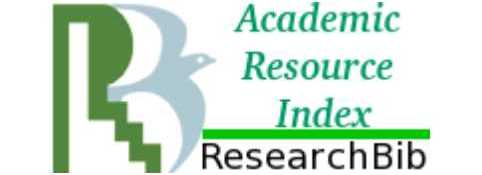













While nobody left any comments to this publication.
You can be first.
Antropov, V. V. (2020), “International Labor Migration: Current Trends and Economic Consequences”, Social'no-trudovye issledovanija, 4(41), 155-167, DOI: https://doi.org/10.34022/2658-3712-2020-41-4-155-167. (In Russian)
Burkhanova, F. B. (2004), Sovremennyj brak v Bashkortostane [Modern Marriage in Bashkortostan], RIO BashGU, Ufa, Russia. (In Russian)
Burkhanova, F. B. (2023), “Changes in the Marriage Structure of Ethnic Groups in Bashkortostan According to All-Russian Population Censuses”, Ufimskij gumanitarnyj nauchnyj forum, 4 (16), 193-215, DOI: https://doi.org/10.47309/2713-2358-2023-4-193-215. (In Russian)
Burkhanova, F. B., Asadullina, G. R. (2022), “Living Conditions and Factors of Families with Children among the Bashkirs and Tuvans (Sociological Analysis)”, Research Result. Sociology and Management, 8 (4), 31-46, DOI: https://doi.org/10.18413/2408-9338-2022-8-4-0-4. (In Russian)
Ryazantsev, S. V., Pismennaya, E. E., Sivoplyasova, S. Yu., Akramov, Sh. Yu., Gafurova, Sh. Sh. (2017), “The Impact of Labor Migration on Family Relations in Sending Countries of Central Asia (using Tajikistan as an Example)”, Segodnja i zavtra Rossijskoj jekonomiki, (83-84), 35-52, DOI: https://doi.org/10.26653/1993-4947-2017-83-84-02. (In Russian)
Gimbatov, Sh.M. (2010), “Ethnoregional Features of Labor Migration in the Republic of Dagestan”, Trud i social'nye otnoshenija, 21 (12), 21-25. (In Russian)
Ryazantsev, S.V., Arkhangelsky, V.N., Vorobyova, O.D., Rostovtseva, T.K. et al. (2020), Demograficheskoe razvitie Rossii: tendencii, prognozy, mery. Nacional'nyj demograficheskij doklad – 2020 [Demographic Development of Russia: Trends, Forecasts, Measures. National Demographic Report – 2020], OOO “Obedinennaya Redaktsiya”, Moscow, Russia. (In Russian)
Rostovskaya, T. K., Shabunova, A. A. et al. (2024), Demograficheskoe samochuvstvie regionov Rossii. Nacional'nyj demograficheskij doklad – 2023 [Demographic Well-Being of the Regions of Russia. National Demographic Report – 2023], Vologodskiy nauchnyy tsentr, Vologda, Russia. (In Russian)
Karpov, Yu. Yu., Kapustina, E. L. (2011), Gorcy posle gor. Migracionnye processy v Dagestane v HH-nachale XXI veka: ih social'nye i jetnokul'turnye posledstvija i perspektivy [Highlanders after the Mountains. Migration Processes in Dagestan in the 20th–Early 21st Century: Their Social and Ethnocultural Consequences and Prospects], Peterburgskoye vostokovedeniye, St. Petersburg, Russia. (In Russian)
Namrueva, L. V. (2011), “The Impact of Youth Migration on the Preservation of Ethnicity (using the Kalmyks as an Example)”, RUDN Journal of Sociology, (2), 87-92. (In Russian)
Bekarev A. M., Bondarenko V. A., Bicharova M. M. et al. (2017), Rossijskaja molodezh': social'no-demograficheskij portret i sistema cennostej v kontekste mnogonacional'noj osnovy rossijskogo gosudarstva [Russian Youth: Social and Demographic Portrait and Value System in the Context of the Multinational Foundation of the Russian State], Obshchestvo s ogranichennoy otvetstvennost'yu «Izdatel'sko-torgovyy Dom «PERSPEKTIVA», Moscow, Russia. (In Russian)
Ryazantsev, S. V., Rostovskaya, T. K., Arkhangelsky, V. N. et al. (2023), Rossijskoe obshhestvo i gosudarstvo v uslovijah stanovlenija novogo mirovogo porjadka: demograficheskaja situacija v 2022 godu [Russian Society and the State in the Context of the Emergence of a New World Order: The Demographic Situation in 2022], Izdatelstvo Prospekt, Moscow, Russia, DOI: https://doi.org/10.19181/monogr.978-5-392-38629-1.2023. (In Russian)
Rostovskaya, T. K. (2013), “Development of the Institute of Young Family in Modern Society”, Gosudarstvennyj sovetnik, 2 (2), 46-52. (In Russian)
Rostovskaya, T. K., Saralieva, Z. Kh. M. (2018), “Characteristics and Life Strategies of Young Migrants from the National Republics of the Russian Federation Living in the Nizhny Novgorod Region”, Research Result. Sociology and Management, 4 (1), 72-85, DOI: https://doi.org/10.18413/2408-9338-2018-4-1-72-85. (In Russian)
Ryazantsev, S. V., Ledeneva, V. Yu., Mishchuk, S. N. (2023), “The Impact of Migration on the Transformation of the Ethnic Composition of the Population of Russia: Trends and Approaches to the Policy of Adaptation of Migrants”, Zhurnal Sibirskogo federal'nogo universiteta. Serija: Gumanitarnye nauki, 16 (1), 104-116. (In Russian)
Savoskul, M. S. (2011), “Adaptation Strategies for Ethnic Migrants in Local Communities”, Monitoring obshhestvennogo mnenija: jekonomicheskie i social'nye peremeny, (5), 103-112. (In Russian)
Rostovskaya, T. K., Vasilyeva, E. N., Kalachikova, O. N. (2024), Studencheskaja sem'ja v Rossii: bar'ery i vozmozhnosti blagopoluchija [Student Family in Russia: Barriers and Opportunities for Well-Being], Ivanovskiy gosudarstvennyy universitet, Ivanovo, Russia. (In Russian)
Turakayev, M. S. (2021), “Temporary Labor Migration in Russia: Current Issues and Sociological Research”, The Journal of Sociology and Social Anthropology, 24 (4), 34-58, DOI: https://doi.org/10.31119/jssa.2021.24.4.2. (In Russian)
Turakayev, M. S., Baimurzina, G. R. (2022), “Shift Work through the Eyes of Temporary Labor Migrants from Bashkortostan”, Problems of Territory's Development, 26(6), 115-133, DOI: https://doi.org/10.15838/ptd.2022.6.122.7. (In Russian)
Ukhanova, A. V., Smirennikova, E. V., Voronina, L. V. (2021), “Classification of Factors of Migration of the Population of the Russian Arctic”, Scientific Journal «Fundamental Research», (4), 123-129, DOI: https://doi.org/10.17513/fr.43011. (In Russian)
Khilazheva, G. F. (2021), “Modern Family in the Context of Translocal Migration (on the example of families of shift migrants from Bashkortostan)”, Woman in Russian Society, (1), 68-82, DOI: https://doi.org/10.21064/WinRS.2021.1.6. (In Russian)
Shapovalova, I. S., Zavodyan, I. S., Valieva, I. N. (2021), “Youth of the Russian Borderland: The Problem of Ethnic Identity and Tolerance”, Research Result. Sociology and Management, 7 (1), 21-38, DOI: https://doi.org/10.18413/2408-9338-2021-7-1-0-2. (In Russian)
Shapovalova, I. S., Malikova, E. V. (2018), “Implementation of State Youth Policy in Russia: Regional Aspect”, Theory and Practice of Social Development, (6), 22-26, DOI: https://doi.org/10.24158/tipor.2018.6.4. (In Russian)
The article was Prepared within the Framework of the Program of Scientific Research Related to the Study of the Ethnocultural Diversity of Russian Society and Aimed at Strengthening the All-Russian Identity 2023-2025 (Headed by Academician of the Russian Academy of Sciences V. A. Tishkov).